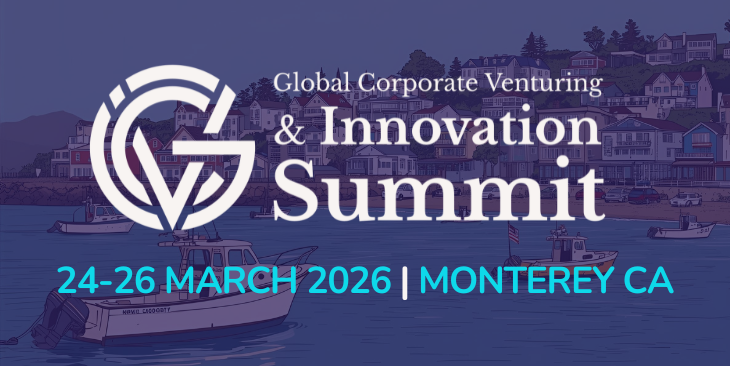This month's TT Regions returns to the EU as Ireland rebounds to growth, France settles into the new SATT system, and Germany looks to pull together the pieces on tech transfer.
Ireland
Gregg Bayes-Brown
It is somewhat staggering to think that this time six years ago, commentators around the world were calling Ireland’s economic woes the “death of the tiger”, a reference to the country’s roaring pre-2008 Celtic Tiger period of growth. Just four years ago, the country staved off bankruptcy by accepting a €67.5bn ($87.4bn) bailout from the International Monetary Fund (IMF) and the EU, in which the country’s credit rating was downgraded to junk as a gloomy portrait was painted of Ireland’s future.
As it turns out, the tiger was only injured. Ireland exited the bailout programme just before the turn of the year, and its credit rating has bounced back to A– with either a stable or positive outlook. And then, just this month, the country announced it was looking to repay €15bn of the €22bn still owed to the IMF. Ireland’s comeback may not yet be complete, but considering that, just a short time ago, its finances were threatening to sink the euro, the turnaround is somewhat staggering.
One of the driving forces behind the Celtic Tiger’s rise and fall and the ensuing resurrection has been its culture. Not averse to taking risks, the luck of the Irish – a phrase that can either mean particularly good or spectacularly bad luck – lends itself well to the bold outlook of the entrepreneur as well as the spirit of the country.
One of the aspects helping drive the resurgence has been Ireland’s tech transfer scene. After a few choppy years, it is bouncing back. Spin-out rates more than doubled year on year, with 34 delivered last year, along with more patents filed (119), licensing agreements (also 119) and invention disclosures (435). The government has supported a tech transfer strengthening initiative through Ireland’s difficult 2008 fallout, and will have invested €52m into the tech transfer system between 2007 and 2016. Much of this has gone into building an ecosystem that streamlines results and enhances engagement among the various players in tech transfer. Also bolstering the scene has been state-owned Enterprise Ireland and Knowledge Transfer Ireland (KTI), an organisation founded by Enterprise Ireland and the Irish Universities Association last year.
Enterprise Ireland’s impact has been immense. The organisation has established a reputation as one of the leading development agencies worldwide, and supports companies across Ireland through training, networking and investment, both direct, and through seed and venture funds it helps establish. Its companies achieved an 8% growth in the value of exports throughout last year. It has invested €92m in commercialising research and supporting collaborative research and development (R&D), a further €65m was invested directly in Irish companies last year, and its seed and venture capital schemes now have a combined fund size of €1.32bn.
The latest seed and venture capital scheme, the fourth incarnation due to run between 2013 and 2017 and worth €175m, is looking to help create numerous seed and venture funds to support Irish enterprise. A notable example is the €32m set up with Bank of Ireland for Limerick University, which is investing purely in spin-outs and startups from the institution. This and other initiatives are having a huge impact on campus innovation. Not only have Limerick spin-outs now attracted €80m in external funding and added 260 jobs to the local ecosystem but, rather than dismissing tech transfer as an afterthought, academics with industry in mind are now reaching across the aisle and getting to know the companies in the area in a manner unprecedented outside the halls of institutions such at Stanford University and Massachusetts Institute of Technology in the US.
KTI is also building its impact since its launch late last year. Different from membership organisations such as the Association of University Technology Managers in the US and Canada, or PraxisUnico in the UK, KTI goes beyond training and events.
Alison Campbell, director at KTI, said: “KTI is about making sure that the technology transfer system actually works. Some of the things that we are charged to do is make sure that the national intellectual property protocol is revised, refreshed and works in practice, and to provide a set of guidelines on how the state wants research and industry to interact. We are responsible for streams of funding that go to tech transfer offices to support them operationally and professionally develop them, and we are responsible for monitoring and reviewing the technology transfer system in Ireland.
“We are also there to make it easier for investors and institutions to engage by making it easier to find opportunities and expertise. We provide guidelines online on how to work with universities if you are not familiar with working with them, and providing the resources and tools to make them easy to access. We have got about 160 opportunities online, and you can research expertise in a particular area with contact details for researchers and tech transfer offices you may need to contact to take things forward.”
Ireland has some way to go to get back to full sprint, but it has built solid foundations through a web of support involving industry, finance, universities and government.
Germany
Thierry Heles
University research commercialisation in Germany is still a recent development. It began in 1975, when Ruhr University Bochum set up the country’s first tech transfer office, Unikontakt. It was another two decades before the institution formalised the arrangement and set up a limited company, Rubitec, in 1998.
Tech transfer in Germany has lacked a national strategy such as those in France or Ireland, not least due to the legal reality that tertiary education is constitutionally not a federal but a state matter. Indeed, the federal government’s Hochschulrahmengesetz (higher education framework law) makes no mention of research commercialisation at all.
Karl Grosse, managing director at Rubitec, said that in 1998, they could identify only Hamburg-Harburg Institute of Technology’s tech transfer company Tuhh Technologie as a viable model. Although many universities across the country have since then set up commercialisation arms, this underlines how recent a development tech transfer is, perhaps explaining the lack of unity with which institutions are still grappling.
Grosse is, however, optimistic about the future for Rubitec and tech transfer in Germany.
Indeed, the government has been making advances in creating a more homogenous environment. The Ministry of Education and Research launched Horizon 2020 in Germany in February 2014. The programme is an €80bn ($103.6bn) research initiative set up by the EU for the whole union, and runs from 2014 to 2020. The programme, however, targets not only university spin-outs but also research and development at more established companies.
At the launch, Máire Geoghegan-Quinn, European commissioner for research, innovation and science, said: “From Hanover to Düsseldorf, from Stuttgart to Dresden, and of course in Berlin, I have seen how Germany’s genius for science and innovation has sustained your economy through Europe’s most trying economic crisis. I have been very inspired by the scientists and engineers, the innovators and manufacturers that I have met in companies like Bayer and Bosch, and in organisations like the German Aerospace Centre.”
That is not to say that federal initiatives do not exist. Some developments have happened organically, such as TechnologieAllianz, which aims to reunite universities under an umbrella organisation to improve dialogue with industry and foster commercialisation efforts. Set up in 1999, it remains doubtful, however, how much impact and success the or
ganisation has had.
Another initiative trying to fight the splintered reality of German tech transfer is Exist, set up by the Ministry for Economic Affairs and Energy. The programme, launched in 1998, is now supporting spin-out creation at 117 universities across Germany.
It currently offers two phases of funding. Phase I is aimed at funding promising research and lasts 18 months – which can be extended to 24 months for research-intensive projects – and offers up to €70,000. Phase II offers successfully spun-out companies up to €150,000 in funding, but the spin-outs must raise €50,000 from outside investors.
Exist also supports the German Accelerator, which gives spin-outs the opportunity to visit Silicon Valley for three months. Up to 16 spin-outs are selected each year, with three criteria for eligibility – the spin-out must have completed all incorporation procedures, it must be younger than three years, and it must have a business plan that proves economic viability and growth.
Germany’s commercialisation efforts might still be mostly fractured, but it appears the country is slowly moving towards a more nationally-considered approach.
As for Rubitec, Grosse remains optimistic, and said the future for his tech transfer company was looking bright. “After more than 16 years, we have managed to establish ourselves well, with a good mix of projects, services and patent registrations.”
France
Thierry Heles
France has been reworking its university commercialisation efforts from the ground up in recent years. The 2011 investissements d’avenir (future investments) initiative has allocated €3.45bn ($4.46bn) to research commercialisation at public laboratories, public research institutes and public universities.
The initiative has led to the creation of the sociétés d’accélération du transfert technologique (Satts), which are receiving funding of €900m out of the €3.45bn. The government holds 33% of the Satts’ capital and voting shares, with a government representative sitting on the board of each individual Satt.
The aim of these regional technology transfer organisations has been to replace the fragmented structures previously existing in the country. As of September 2014, 10 such Satts are fully in operation, with a further two in the launch stages and funding allocated to another two. Individual funding for the organisations ranges from €36m for Conectus Alsace to €78m for Satt Lutech and for Satt Sud-Est.
Olivier Freneaux, president of both Satt Sud-Est and the Satt association, summed up the changes the Satts have wrought in France by saying: “Five were created two and a half years ago, the most recent two only this summer. They are operational today but all at varying degrees of maturity, with national co-ordination under the Satt association offering all the right conditions for an increase in collaborative power.”
The initiative has set itself the goal of commercialising 3,000 inventions and spinning out 500 companies within a decade. This may sound ambitious, but even with the project not fully launched nationwide, Satts have already identified more than 2,500 inventions that could be licensed, and have now licensed 100 such inventions to companies, up from 39 a year ago, filed patents for 372 inventions, up from 186, and have spun out 22 companies, up from 15. All these efforts have been supported with a combined €48m in funding.
A total of 160 institutions are now using a Satt as their technology transfer company. In fact, with the addition of two further Satts since our look at France’s efforts a year ago, staff numbers have grown from 293 to 358.
Personnel from Satt organisations have also worked their way to the top in other organisations, fortifying their influence in the French tech transfer scene. Olivier Freneaux not only heads Satt Sud-Est and the Satt association, but is also treasurer at Réseau Curie, a network connecting professionals from more than 160 research institutions, including universities, public laboratories and university hospitals, across France. Meanwhile Nicolas Carboni, president of Conectus Alsace, was elected president of Réseau Curie in July.
Freneaux declares himself proud of the Satts achievements thus far, adding: “With the means put in place by the investissements d’avenir programme, the Satts do not have an international equivalent and our colleagues at foreign technology transfer offices have a very favourable view of the Satt model.”
The optimism and pride certainly seem warranted. The growth of the Satts may not be exponential, but it is proving to be steady despite the final two, Satt Gift Grenoble Alpes and Satt Paris Saclay, yet to be launched.







